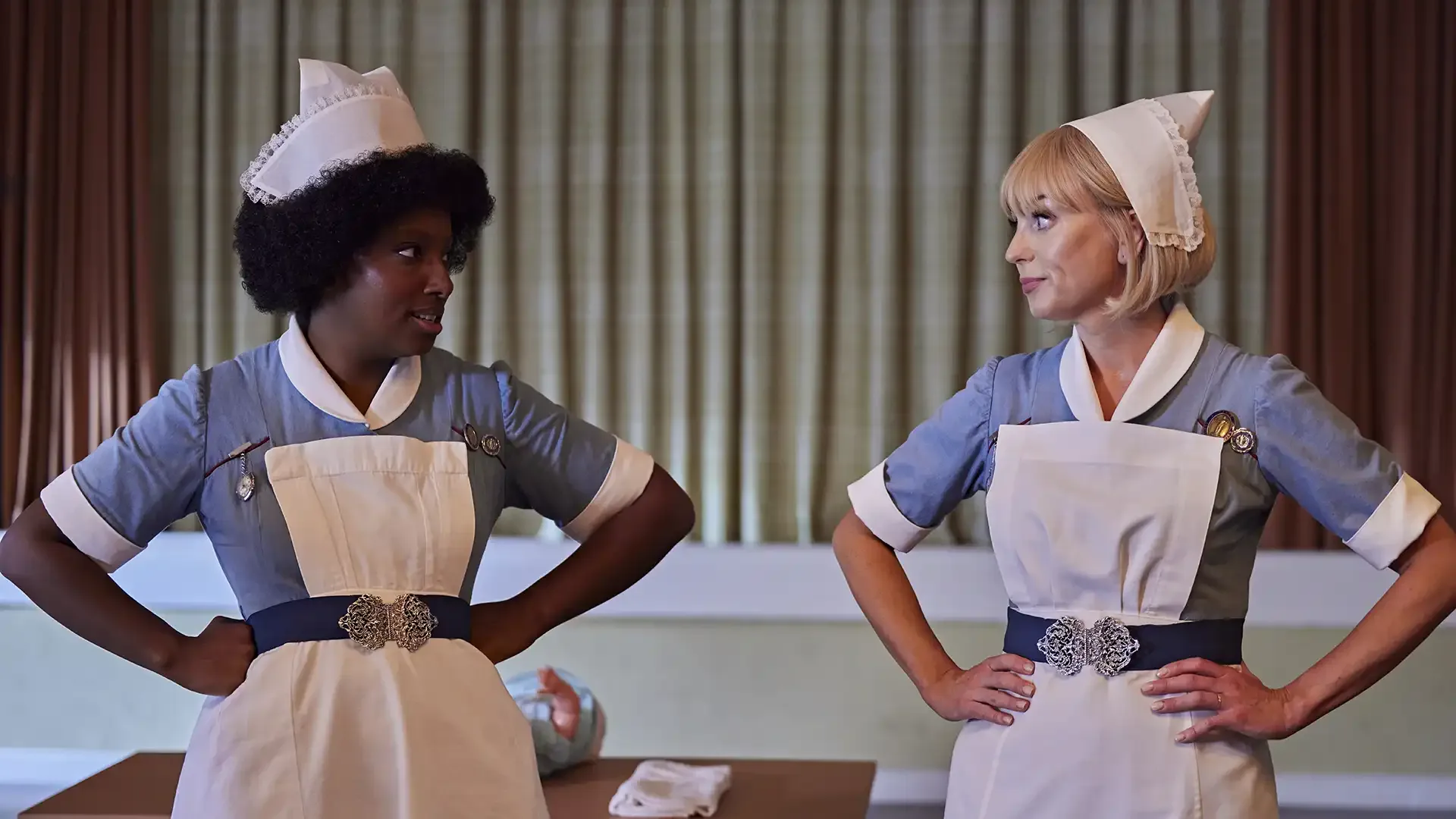“We did not come to earth to live our lives alone. We all need each other from the moment we are born. Our hearts beat side by side, in tandem with the ticking of the clock we all must follow. Life. Love. Work. Hand in hand in hand. This is the rhythm of the world and, if we are to thrive, we must dance to it together. If we are forced to dance alone, we may stumble and then fall.”
Season 14, Episode 2 dealt with topics of mental health, homelessness, a public health issue of a sexually transmitted infection outbreak, and the involvement and engagement of the community with the Flower Festival. One common thread was that the midwives made sure people were seen, heard, and they met them where they were.
I loved how Trixie really engaged with helping Arlene with her mental health issues. She read about the impacts of lithium. Trixie committed the extra time to support her beyond just giving her a pharmaceutical and monitoring her labs. As a midwife, she showed her respect, listened, and truly saw her. Mental health is a complicated web and as her midwife, she really tried to stand with her.
Some of Trixie’s actions really exemplified those extra touches: reading up on lithium and getting milk of magnesia and peppermint cordials to assist with the possible side effect of nausea; making sure she knew the plan of care; getting Arlene involved with the Mother Craft class with other community members; ensuring she had time with the baby when she had her postpartum hospitalization; and sharing with her a memento of hope. The tuft of hair tied up with a ribbon was a strong visual of hope.
Rosalind made sure that those experiencing homelessness were seen. She made sure that they were included and represented at the Flower Festival. She really listened to one of the individuals, Ted, and made sure she saw him with his strengths and more importantly his limitations and challenges.
Ted shared his life story. Rosalind heard about the unraveling of his life with the house fire in which he lost his wife and child. She held space for him and brought his creative ideas for the floral design alive. Since he had been a window dresser at Harrods, she wanted him to feel that he was still that capable person. She tried to reignite that passion. He was ultimately not able to see the entire design through; however, each small success is the success!! Rosalind and Cyril were able to bring his design to life and bring needed attention to the homeless shelter.
The teamwork and process behind the Nonnatus House nuns, nurses, midwives, Miss Higgins, and Dr. Turner investigating the gonorrhea cases was such a great example of public health in action with contact tracing. We got to witness them in their process of identifying people who had been in recent contact with someone diagnosed with an infectious disease. I loved seeing them with their city map, clipboards, spreading out, and interviewing and listening as they connected the dots with people, their lives, and their stories. They met the community where they were!! They went that extra step and went to the brothel rather than expecting them to come to the clinic. I applaud Call the Midwife for always depicting a strong sense of community.
As a modern-day midwife, this show really got me reflecting on my own community and the impacts from recent cuts to federal programs, which will impact state and local levels within public health departments. The role of public health in this episode really resonates today in light of those cuts and the resulting protests. Just as Call the Midwife shines a light on community – the seen and unseen – I feel proud to join many in my community, the country, and those around the world as we work to raise awareness about these important issues.
I love Call the Midwife. The show always leaves me hopeful. Several lines really stood out and inspired me within my midwifery journey with community engagement. Lines such as: “When you get tired, I will carry you,” “Some things bloom where we least expect them,” “They make it work!” and Sister Julienne noting, “the infinite love of friendship.” Just like our characters in the show, modern-day midwives will need to hold space, listen, see, and engage for the seen and for the unseen.
“Sometimes there’s no hand to take ours or to hold it. The heart beats on apparently alone. But hope is never lost to us completely. It can hang by the finest and most delicate of threads surviving somehow just as we do. Hope is the ribbon that transfigures everything. It can transform wild weeds into a posy. It can bind separate energies into a potent force. Hope ties us, hope secures us. And the life unites us all.”
